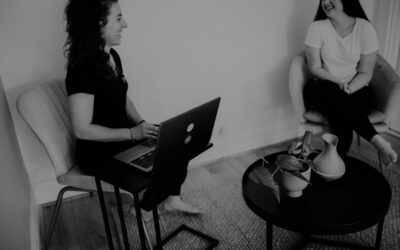Chronic pelvic pain is a highly complex condition that is extremely individualised. Sometimes it is associated with conditions such as endometriosis, pelvic floor dysfunction, the menstrual cycle, or pregnancy; and then other times it is idiopathic and mysterious.
Let’s have a brief look at some of the possible causes.
Endometriosis: Endometriosis is an inflammatory condition that causes high amounts of cyclical pain and bloating, along with mental distress. Symptoms may reflect the site and depth of the endometriotic infiltration, but severity of symptoms doesn’t correlate with the severity of endometriosis. Women with Endometriosis typically present with pain bracing mechanisms from years of dealing with the pain. This pain bracing can cause tightness and “lock down” of the muscles and structures surrounding the pelvis and abdomen, possible causing them to become hypertonic and irritated.
Pelvic floor dysfunction: If you haven’t already, go back and read my previous blog post on the pelvic floor to get a good understanding of pelvic floor involvement. If the pelvic floor is lacking strength or is hyperactive/hypertonic, this may result in pelvic pain. Many muscles, ligaments, and nerves are attached to the pelvis and they may all need a hand when rehabilitating pelvic pain. Pelvic floor dysfunction may be a result of those listed in my pelvic floor blog, or from endometriosis, PCOS, musculoskeletal injuries or concerns, surgeries, and more.
Menstrual cycle – Primary Dysmenorrhea: Primary dysmenorrhea is the medical term for cramps and is the most common cause of chronic cyclical pelvic pain in women of reproductive age with around 60% of women affected. Pain may arise during the follicular phase, surrounding ovulation, or in the luteal phase of your cycle (don’t worry if you’re not sure – I can teach you how to track it!). There may also be multiple pain sites such as the lower back and thighs. The time and type of pelvic pain that presents can tell us a lot about how to treat it, along with an indication of your general health.
Pregnancy: Pelvic pain may arise during or after pregnancy as the female body endures many changes during this time. Generally, the biggest structures we look at during and post pregnancy are the pelvis, the pelvic floor, and abdominal wall (including the diaphragm). Additional to these structures, centre of gravity, postural changes, lifting and carrying techniques, and sleeping positions need to be considered to fully evaluate the pain.
Breathing: Although breathing seems like something so simple as it is innate, breath has a huge impact on our physical and mental health. The diaphragm sits directly above the pelvis, and with each inhale and exhale, gently moves many muscles and joints along with it. If breathing is short, sharp, chest dominant, or you are performing Valsalva manoeuvre, it can hugely impact the pain in your pelvis.
It is definitely evident how complex pelvic pain can be and how there can be an interplay between all of the above conditions as well as the many other possible causes. One other major contributing factor to chronic pelvic pain is psychology. Women may be living with their pain for months or years, may have seen multiple health professionals with no conclusive diagnosis or treatment plan. This brings another important and difficult aspect into the treatment of chronic pelvic pain and definitely needs to be addressed. Other causes of pelvic pain may be adenomyosis, uterine leiomyoma, cervical stenosis, and intrauterine adhesions to name a few.
At Seed Exercise Physiology, treating and supporting women experiencing chronic pelvic pain is a leading specialisation. Integrative assessment, exercise therapy, support, advice, and education on each unique situation is of utmost importance. Acknowledging and identifying even the smallest influence in your daily life, physical movement, and mental psyche, can change the way you respond to treatment.
It is imperative to understand that you are capable of receiving help for your pain, and it is never the same as the person next to you.
If you have been experiencing pelvic pain that causes worry, abnormal bleeding, or you are pregnant, please consult your health care provider.




